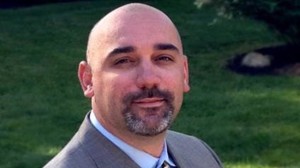 Fannie Mae and Freddie Mac investors are toast. That is the verdict the market delivered last week after a judge threw out a lawsuit to stop the government from seizing most of their profits. I don’t want to get into the details or merits of the case, but it is important for you to know that the common and preferred shares of Fannie and Freddie took a beating following the ruling. The Fannie Mae preferreds plunged almost 50% on the day of the announcement and they are down more than 60% since September 30th.
Fannie Mae and Freddie Mac investors are toast. That is the verdict the market delivered last week after a judge threw out a lawsuit to stop the government from seizing most of their profits. I don’t want to get into the details or merits of the case, but it is important for you to know that the common and preferred shares of Fannie and Freddie took a beating following the ruling. The Fannie Mae preferreds plunged almost 50% on the day of the announcement and they are down more than 60% since September 30th.
The ruling on the mortgage giants’ shares was notable, but what was most interesting about this story was the impact it had on Fannie and Freddie investors. One headline that caught my attention read, “Berkowitz Hit With Right Hook by Ruling in Fannie Mae Case.”
Bruce Berkowitz is the manager of the Fairholme Fund. The press made a big deal out of Berkowitz a few years back. He had a pretty impressive record of outperformance versus the S&P 500. In 2010, Morningstar even named him the domestic fund manager of the year. His star has faded a bit in recent years (as his performance lagged), but his flagship Fairholme Fund still has about $8 billion under management.
I don’t follow Berkowtiz or his fund closely. I clicked on the headline out of curiosity. I assumed the author was probably embellishing a bit to boost readership. Boy was I wrong.
What I read was shocking. Berkowitz has about 15% of the Fairholme Fund’s assets invested in various Fannie and Freddie securities. He took a right hook alright, and it was square to the jaw. The Fairholme Fund lost 10% the day the Fannie news broke.
Putting Potential Return Ahead of Risk
Maybe there is a solid case against the government and maybe Fannie and Freddie investors will ultimately prevail in the suit, but that isn’t the point. The point is that Berkowitz is taking an inordinate amount of risk with his clients’ money. He is wagering 15% of the Fairholme Fund’s assets on an unknowable outcome. Risk is clearly taking a backseat to potential return here.
This isn’t investing, it is the very definition of speculation.
Unfortunately for unsuspecting Fairholme shareholders, Fannie and Freddie are just the tip of the iceberg. Berkowitz has almost half of the Fairholme Fund’s assets invested in AIG, another 14% is invested in Bank of America and 7% in Sears. Including the Fannie and Freddie positions, that’s about 85% of the fund’s assets invested in just four positions—three of which are in the financial sector. I don’t know what you call this strategy, but I can tell you that it is a strategy that is far from suitable for most investors.
My only hope is that the folk putting money in the Fairholme Fund understand what they are buying. Regrettably it’s likely that many investors in the Fairholme Fund, like many investors in general, are performance chasers. They mistakenly believe Fairholme is no different than any other mutual fund they own, but with better returns. That’s a shame. Because if AIG takes a nose dive like Fannie and Freddie did, these investors could face financial ruin.
Steer clear of Fairholme and funds (or managers) like it that put potential return ahead of risk. Savvy investors do the opposite, as should you.




